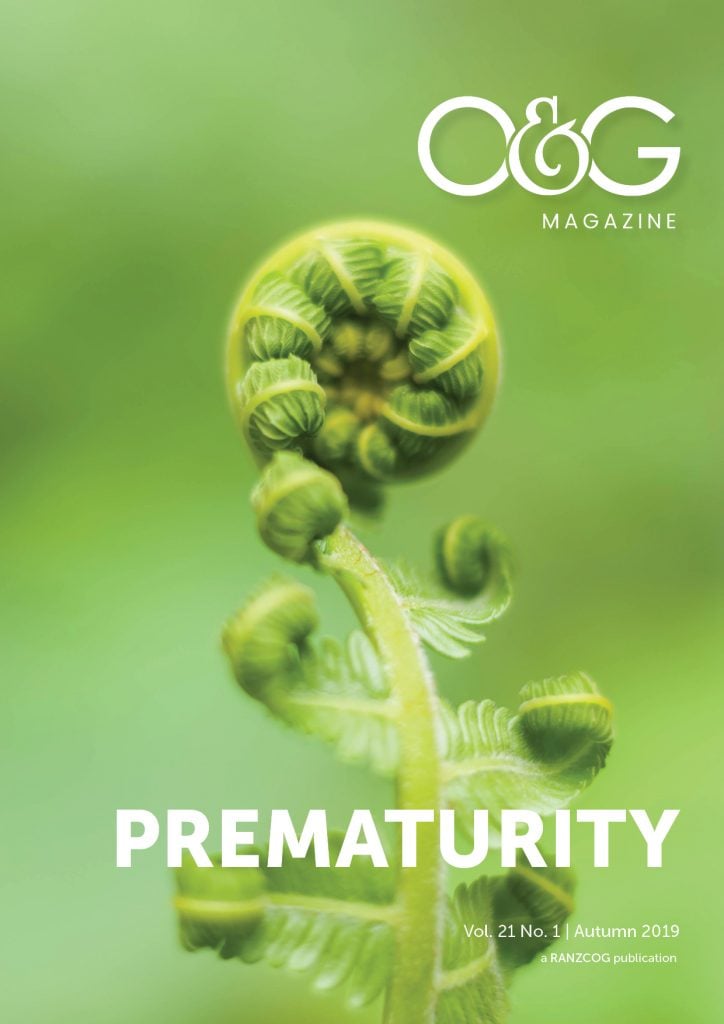The relatively recent discovery of the central role played by the fallopian tubes in the development of epithelial ovarian cancers has increased the focus on bilateral salpingectomy as a potential preventative procedure. Several gynaecological organisations worldwide recommend offering women at average risk of ovarian cancer opportunistic salpingectomy at the time of hysterectomy for benign disease, and the majority of Australian gynaecologists appear to be following these recommendations.1 RANZCOG has extended this recommendation to include offering salpingectomy as an alternative to tubal occlusion when women request permanent contraception.
Ovarian cancer has the highest mortality rate of any gynaecological cancer in Australia and as the currently available screening modalities for ovarian cancer have been shown to be ineffective and potentially harmful, it is natural that gynaecologists have been quick to embrace a promising preventative strategy. However, it is important to recognise that there are no randomised trials supporting the practice of risk-reducing bilateral salpingectomy. The most compelling evidence to date comes from retrospective population data showing a reduction in ovarian cancer risk following hysterectomy, tubal ligation and bilateral salpingectomy. The effect appears most pronounced in women having had a salpingectomy, with the risk reduction estimated at 65 per cent.2
The major weakness in this data is the low number of bilateral salpingectomies performed in the past due to the narrow indications for the procedure, which in one study included chronic inflammation, pelvic inflammatory disease and endometriosis. None of the women included in the study had a salpingectomy for sterilisation, and the fact that they required a rarely indicated operation may not make them representative of the average population in terms of ovarian cancer risk.
Most of the trials to date have focused on opportunistic salpingectomy at the time of hysterectomy. A recent systematic review concluded that there is insufficient evidence to conclude that opportunistic salpingectomy at the time of hysterectomy reduces the risk of epithelial ovarian cancer and emphasised the need for prospective trials to assess the impact of salpingectomy on ovarian cancer risk and ovarian endocrine function.3 Prospective trials are currently underway, but it could be as much as 20 years before the impact on ovarian cancer rates become clear. One such study, a randomised controlled trial comparing standard hysterectomy to hysterectomy and opportunistic salpingectomy, is due to report on surgical complications and menopausal symptoms at one year in 2021. The final results relating to the impact on ovarian cancer risk may not be available until 2050.4
As the true impact of salpingectomy on epithelial ovarian cancer risk will not be clear for many years, there is a compelling argument to offer this surgery to women based on the current imperfect evidence. The evidence so far suggests that although salpingectomy adds around 15 minutes to a hysterectomy, it does not add to the complication rate. Surrogate measures of ovarian function, such as AMH, FSH, oestradiol and antral follicle counts, have also been shown to be unaffected by salpingectomy. However, a recently published study showed an increased risk of menopausal symptoms one year after surgery.5 Attempts at estimating the cost effectiveness of salpingectomy are encouraging, but limited by imperfect estimates of the effect on ovarian cancer risk.
There is little evidence regarding ovarian cancer risk following salpingectomy for sterilisation in women at average risk of ovarian cancer, and the extrapolation of the above evidence from women undergoing hysterectomy is complicated by the age difference between the hysterectomy and sterilisation groups. One retrospective study looking at method of sterilisation and ovarian cancer risk found excisional methods superior to occlusion.6 6 Again, the results were based on case-control data, and due to a low number of salpingectomies performed in the past, did not yield any meaningful results when trying to differentiate between partial and complete salpingectomy.
Sterilisation procedures are now generally performed laparoscopically or during a caesarean section. There are several small studies supporting the feasibility of bilateral salpingectomy at caesarean section, but larger studies are required to confirm this finding, as common-sense-based medicine would suggest an increased risk of complications due to the engorged adnexa in the peripartum period. At laparoscopy, performing a salpingectomy rather than a tubal occlusion will usually require the insertion of an additional port, more expensive consumables and a slightly longer operating time, which is reflected in the approximate $300 difference in the Medicare rebate in Australia. There is also concern regarding ovarian function after salpingectomy, although the disruption to the ovary is less than when performed during a hysterectomy. As sterilisation procedures are generally performed on a younger population, any detrimental effect on ovarian function could have a greater negative impact.
The current evidence makes it difficult to make a clear recommendation of salpingectomy over tubal occlusion for sterilisation. Women should be informed of the potential benefits and risks of the different procedures, including the uncertainty around the effect of salpingectomy on ovarian function. If the sterilisation is performed during a caesarean section, the theoretical risk of increased bleeding should be discussed. The potential benefits of salpingectomy should not influence the choice of contraceptive method and non-surgical alternatives, or even male surgery, should be recommended unless contraindicated. It is worth noting that even with an optimistic estimate of the reduction in ovarian cancer risk, over 300 salpingectomies would be required to prevent one case of ovarian cancer. Time will tell if the benefits warrant subjecting women to the inherent risks of surgery.
References
- Kapurubandara S, Qin V, Gurram D, et al. Opportunistic bilateral salpingectomy during gynaecological surgery for benign disease: a survey of current Australian practice. ANZJOG. 2015;55:606-11.
- Falconer H, Yin L, Grönber H, Altman D. Ovarian cancer risk after salpingectomy: A nationwide population-based study. J Natl Cancer Inst. 2015;107(2).
- Darelius A, Lycke M, Kindblom JM, et al. Efficacy of salpingectomy at hysterectomy to reduce the risk of epithelial ovarian cancer: a systematic review. BJOG. 2017;124:880–89.
- Idahl A, Darelius A, Sundfeldt K, et al. Hysterectomy and opportunistic salpingectomy (HOPPSA): study protocol for a register-based randomized controlled trial. Trials 2019;20(1):10.
- Collins E, Strandell A, Granåsen G, Idahl A. Menopausal symptoms and surgical complications after opportunistic bilateral salpingectomy, a register-based cohort study. Am J Obstet Gynecol. 2019;220(1):85.e1-85.e10.
- Lessard-Anderson CR, Handlogten KS, Molitor RJ, et al. Effect of tubal sterilization technique on risk of serous epithelial ovarian and primary peritoneal carcinoma. Gynecol Oncol. 2014;135:423–7.






Leave a Reply